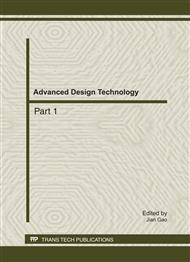p.167
p.174
p.178
p.182
p.189
p.193
p.197
p.201
p.209
Research on Flow Characteristics of Aerostatic Circular Thrust Bearing with a Cone Cavity
Abstract:
The aerostatic circular thrust bearing was taken as a study subject. The numerical simulation method was used to calculate the flow passage. Meanwhile, the single-point testing method was used to test the pressure distribution. The simulation and experiment measurement results were compared and analyzed. The results show that: The single-point testing method is effective to capture the change of flow characteristics. The overall results of simulation and testing coincide with each other well. In the range of cone cavity, the flow pattern for the gas is turbulent flow, and the flow field should be divided into different zones for simulation.
Info:
Periodical:
Pages:
189-192
Citation:
Online since:
August 2011
Authors:
Keywords:
Price:
Сopyright:
© 2011 Trans Tech Publications Ltd. All Rights Reserved
Share:
Citation:


